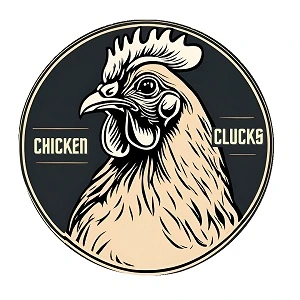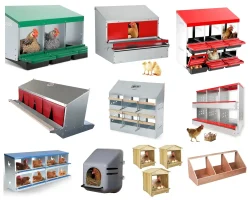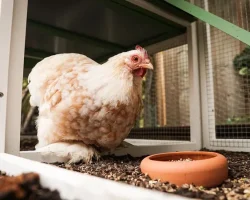As a chicken keeper diving into chicken coop options, you’ve probably noticed that chicken coops come in every size imaginable. From compact little houses to huge chicken coops you can walk into, the choices can feel overwhelming. I have seen many beginning chicken keepers make the mistake of buying a small coop, only to expand their flock within months. So it seems that buying a bigger coop to prepare for future flock expansion is a smart decision. But is a large chicken coop always better for you and your flock?
The answer depends on your flock size, your yard, your time for maintenance, and your goals. A larger coop can bring obvious benefits, but it also has trade-offs. In this article, we’ll explore the advantages and disadvantages, provide a detailed buying guide, and help you decide whether a large chicken coop is the right choice for your backyard flock. By the end, you’ll be ready to make an informed decision.
Also, I’ll point you to a follow-up article on the top 7 large chicken coops rated by an expert (me). I will publish it next week.
The benefits of Large Chicken Coops
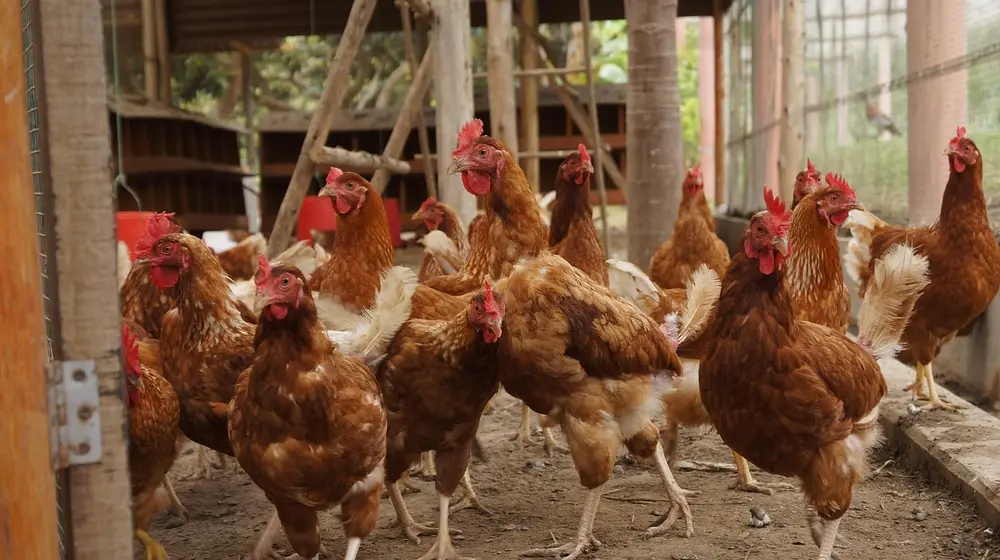
More Room For Happier Hens
Space is more than a luxury; it’s essential for your chickens’ health and happiness. A large chicken coop gives them plenty of room to move around, flap their wings, and avoid conflicts. When hens are crowded, stress increases, and behaviors like feather pecking and cannibalism become more common. A coop with extra space helps prevent these issues and promotes natural behaviors such as dust bathing and perching. When raising backyard chickens, providing adequate space per bird is crucial for reducing stress and maintaining a productive flock.
Easier Flock Expansion
If you’re planning to grow your flock over time, a large coop makes it much easier. You won’t have to scramble to upgrade or build an additional coop to accommodate new hens. Many backyard keepers start small and add a few birds each year, and having a large coop from the start allows a smooth transition without disrupting your flock.
Better Airflow and Comfort
Ventilation is critical in a chicken coop. Larger coops typically allow for more windows, vents, or raised ceilings, which improve airflow and reduce moisture buildup. Moisture and poor ventilation can cause respiratory problems, mold, and frostbite in winter. Properly ventilated large coops help your flock stay healthier year-round and lower the risk of respiratory diseases.
Extra Features and Convenience
With more space, you can include extra features that make your life easier:
- Walk-in access: Easier to clean, collect eggs, and check on hens.
- Integrated storage: Store feed, bedding, and equipment inside the coop.
- Larger runs or perches: Extra room lets chickens roam freely and reduces boredom.

The Drawbacks of Large Chicken Coops
Higher Upfront Cost
A larger coop costs more to build or buy. Materials, labor, and design complexity all increase with size. Even if you build your own coop, the necessary materials can quickly add up: wood, hardware cloth, insulation, and roofing. Some chicken keepers opt for a medium-sized coop to balance cost with function.
More Space Needed In Your Yard
Large coops require significant yard space. If your backyard is small, a big coop may dominate your space or even annoy neighbors. Before purchasing, measure your yard and visualize how a large structure will fit with existing landscaping, garden areas, and fencing.
More Space To Clean and Maintain
More square footage means a bigger area to clean, more bedding to replace, and more surfaces to maintain. Also, there will be more droppings if you keep more hens. Regular cleaning is key, no matter the size of your coop. Features like removable trays, flush-floor doors, or even a small pressure washer can make life easier, but you’ll still spend some time cleaning.
Heating Challenges in Winter
Keeping a large space warm during winter can be tricky. The bigger the coop, the more volume of air you need to heat, and uneven insulation can cause drafts that chill your chickens. Some hobby keepers install small safe heaters or insulate their coops to maintain a comfortable temperature. For tips, see our 9 Top Tips for a Cozy and Safe Winter Chicken Coop.
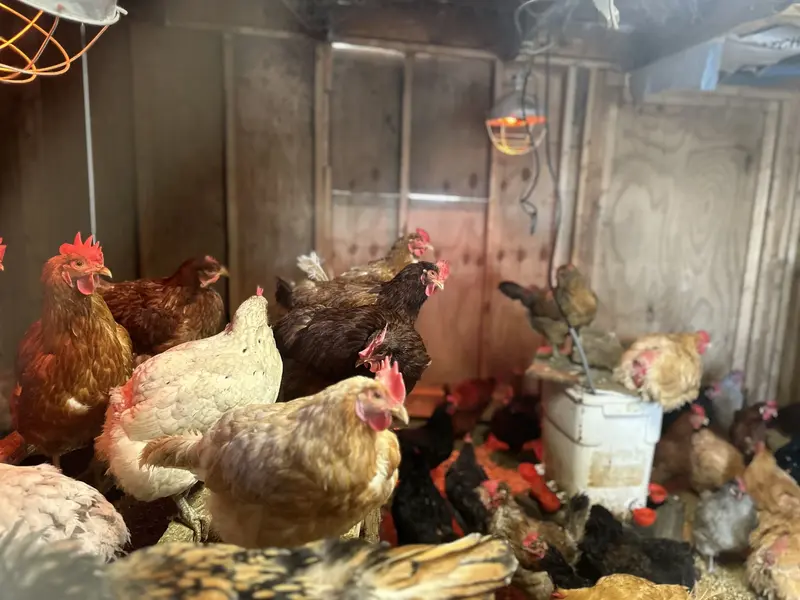
Buying Guide: What To Look For In a Large Chicken Coop?
How Big Should Your Coop Be?
There’s no one-size-fits-all answer, but most experts (myself included) agree on some general rules of thumb for coop space. A good rule of thumb is 3-4 square feet (0.28–0.37m²) per chicken inside the coop and 10-12 square feet (0.9–1.1 m²) per chicken in the run. Bantams require less space because they are smaller.
For example, if you plan to keep 10 standard-sized hens, you should aim for a coop that’s at least 30 square feet (2,8 m²) inside, plus a run of around 100 square feet (90 m²). Extra space is never wasted. Your hens will appreciate room to spread out, which reduces aggressive behaviors.
For more information, check out our guide on How to Choose the Right Chicken Coop Size.
Best Materials For Durability
- Wood: Traditional, provides insulation, aesthetically pleasing. Needs periodic maintenance to prevent rot and damage.
- Metal: Longer-lasting and resistant to pests, but can overheat in summer.
- Plastic or composite: Lightweight, easy to clean with a high-pressure washer, usually resistant to rot, but sturdiness in severe weather depends on plastic quality.
Keeping Predators Out
Security is crucial for large coops. Consider:
- Hardware cloth instead of chicken wire (prevents raccoons and foxes)
- Strong latches and doors
- Raised floors to deter digging predators
- Covered runs or netting for daytime free-ranging (prevents hawks)
Ventilation and Light Matter
Large coops need good ventilation to prevent ammonia buildup. Place vents or windows high on the walls to avoid drafts at chicken level. Natural light improves egg production and keeps hens active, so consider skylights or sun-facing windows.

Easy-to-Clean Design Features
- Walk-in runs and doors make scooping droppings easier, your back will thank you
- Removable trays or sloped floors simplify cleaning
- Smooth surfaces reduce bacteria buildup
Climate Considerations
Large coops can be tricky in extreme weather. In hot climates, ensure adequate shade, vents, and fans. In cold climates, consider insulation, heated chicken waterers, and draft protection to keep hens warm without overheating the coop.
Balancing Quality with Budget
A large coop is an investment. Decide whether you want to buy a pre-made chicken coop or DIY coop plans. Pre-made coops save time and may cost the same as DIY coops. Prices at the hardware store ain’t cheap… DIY gives customization options but may require more time and skill. Consider long-term maintenance costs when comparing prices.
How To Know If a Large Chicken Coop Is Right For You?
So, how do you decide whether a large coop is worth it? Ask yourself:
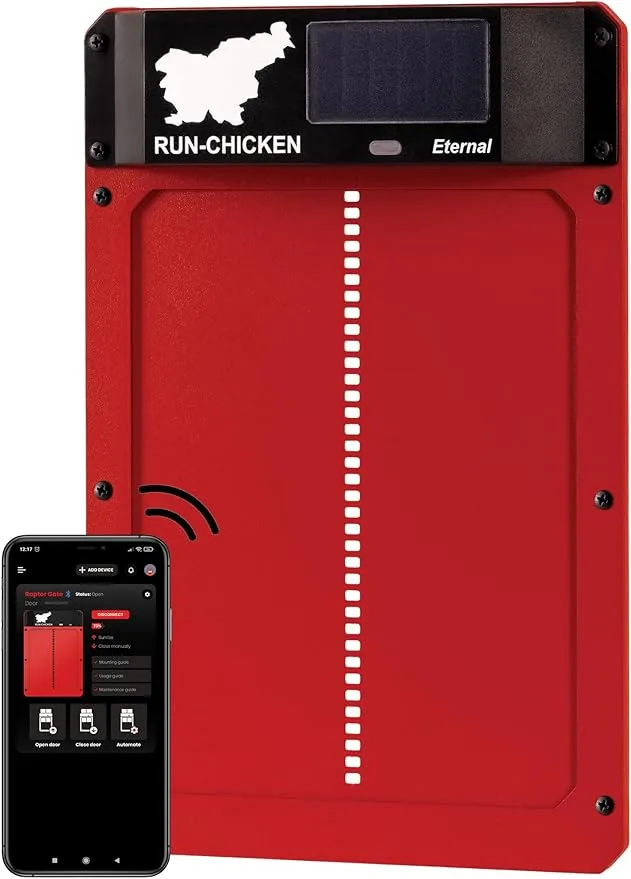
- Do I have enough space?
Measure your yard and account for both the coop and run. Make sure there’s room for free-ranging and maintenance access. - How many chickens do I plan to keep?
If you’re only keeping 6–9 hens, a medium coop may be sufficient. For flocks of 10–15 hens, or if you plan to expand, a large coop offers flexibility and may save you money in the long run. - Am I ready for extra maintenance?
Cleaning, bedding replacement, and minor repairs take time. Larger coops magnify these tasks. - What’s my budget?
Consider not just the upfront cost, but also long-term expenses for bedding, feed, and equipment as needed. - Do I want extra features?
Automatic chicken coop doors, storage space, or walk-in designs can make a big coop more convenient, but also cost more.
If your answers lean toward needing space, planning for growth, and wanting convenience features, a large coop is likely a great investment. If you have limited space, a small flock, or minimal time for maintenance, a smaller coop may be more practical.
Final Thoughts: Explore the Top 7 Large Chicken Coops
Now that you know the benefits, drawbacks, and buying considerations, you’re ready to explore your options. I’ve put together a detailed ranking of the Top 7 Large Chicken Coops, rated by me (an expert) on durability, features, and value. I aim to help you make the right decision for you and your flock!
